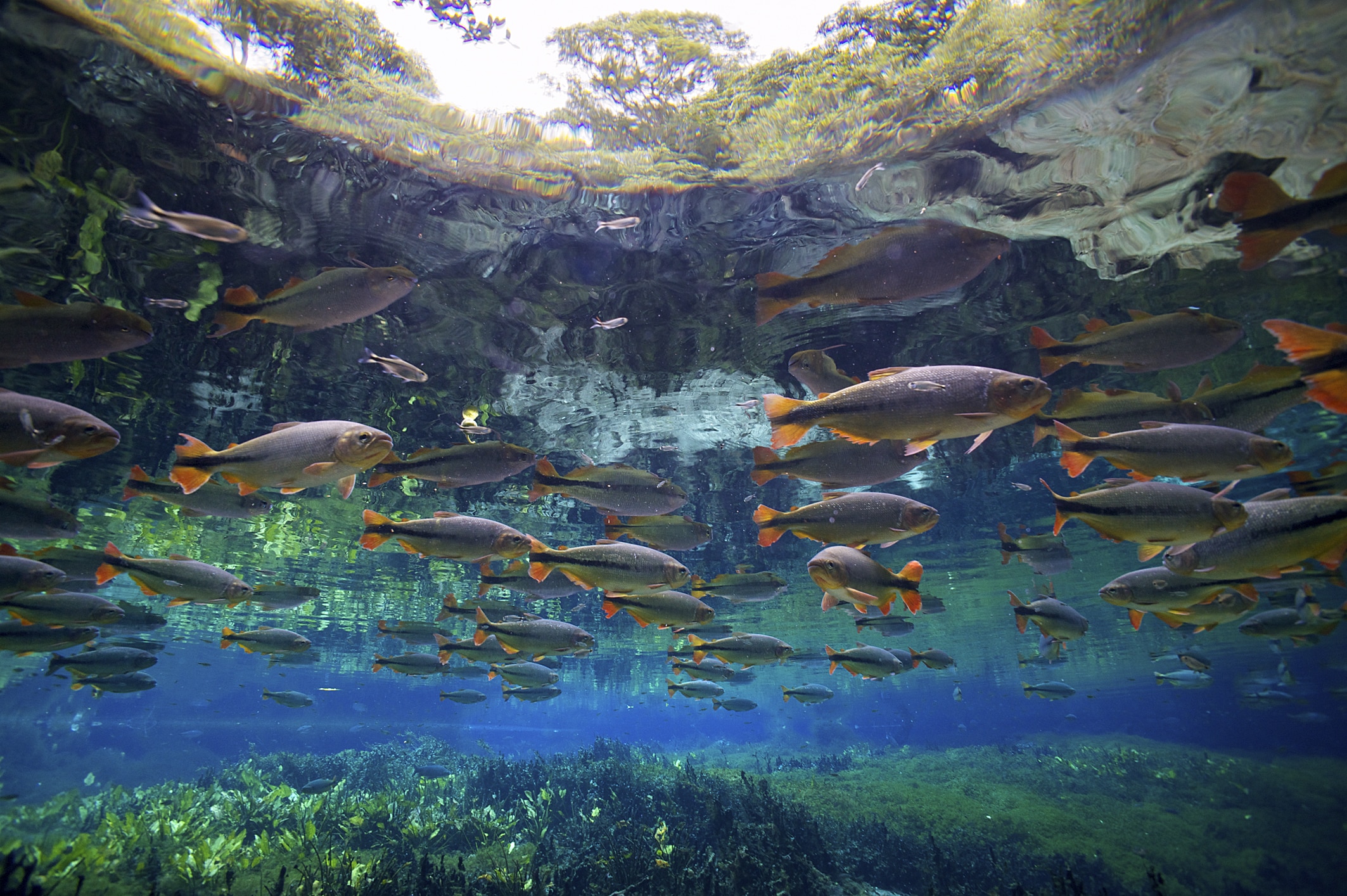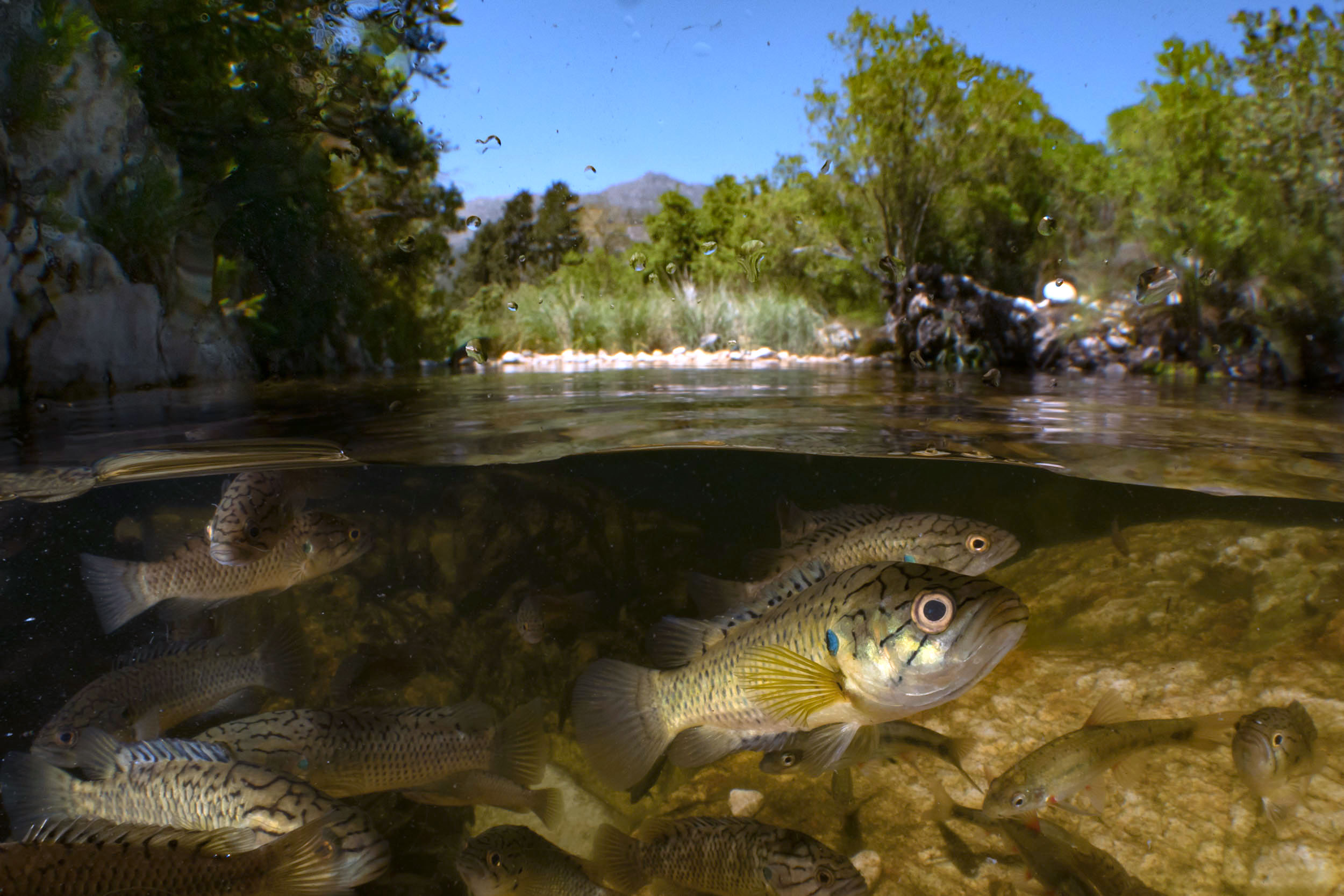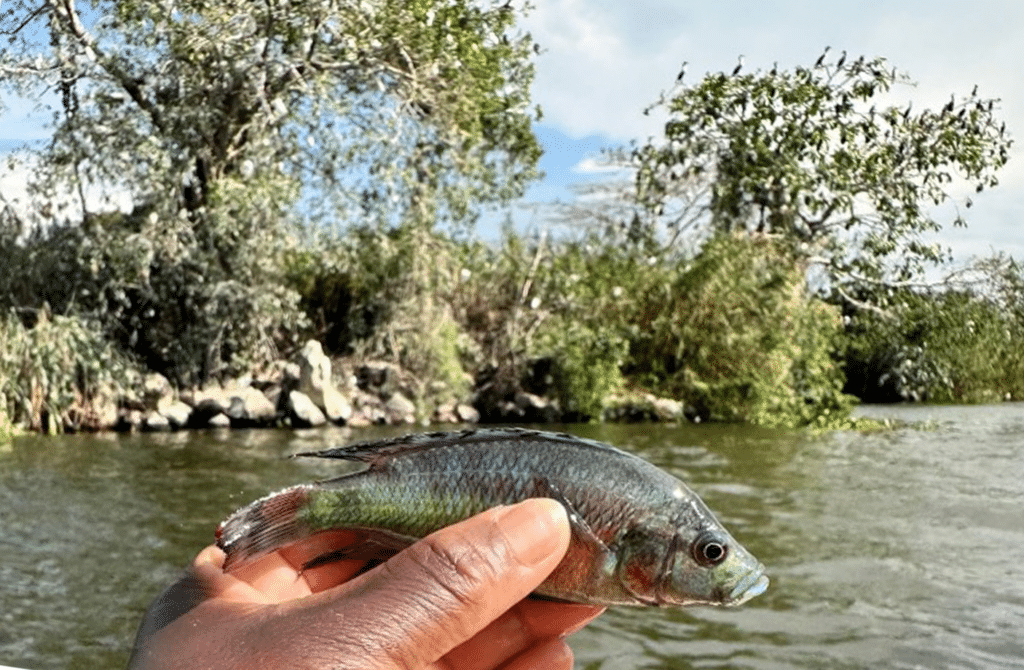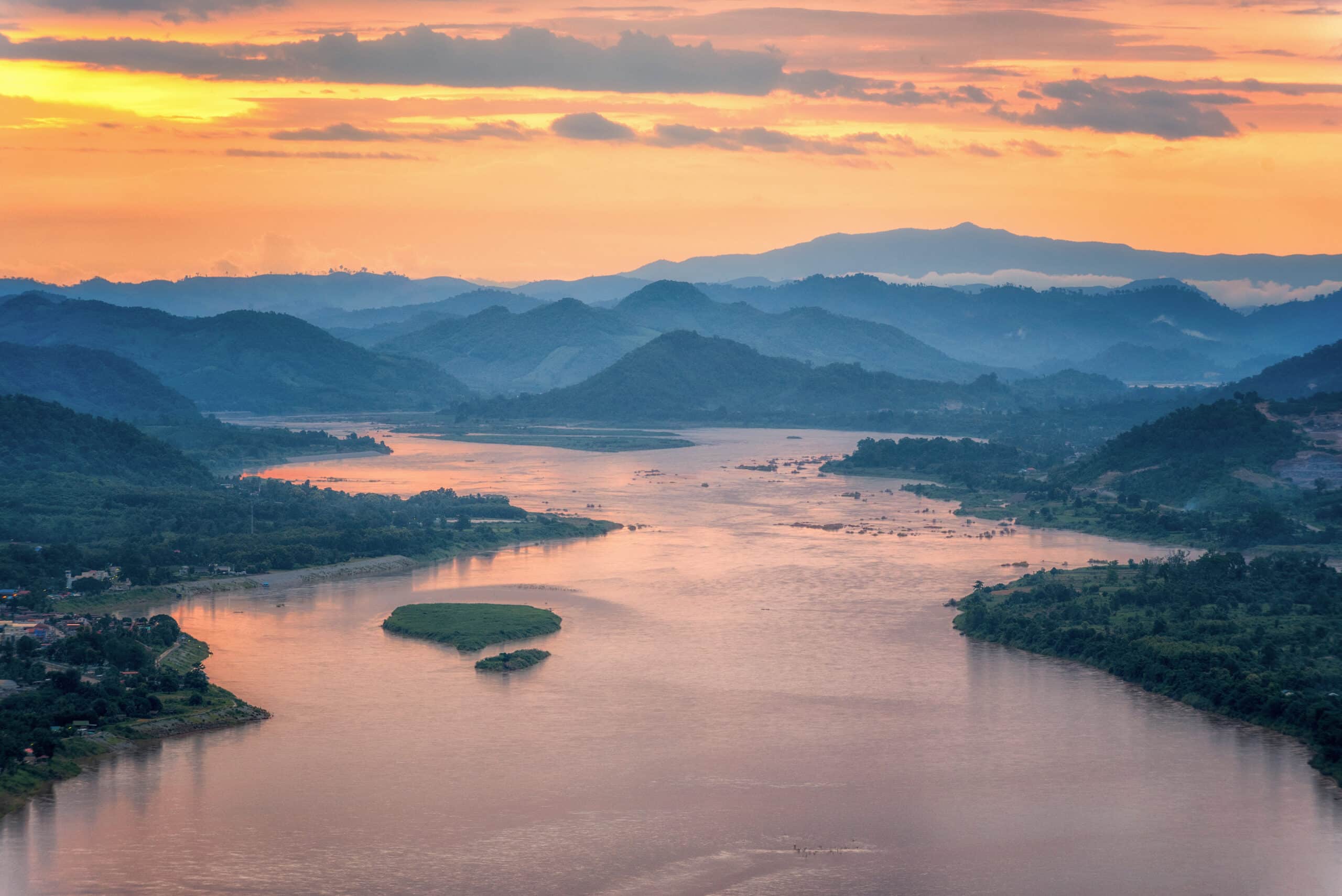Q: What makes a species “lost”?
There is no international standard that defines what constitutes a “lost” species, or a rediscovery, and the criteria varies by taxa. We are working with Re:wild’s Lost Species criteria and have collaborated with experts from the IUCN SSC Freshwater Fish Specialist Group to nominate species. At minimum, a species has to have been lost to science (unseen by scientists) for at least a decade for it to make it on our list of nominations.
Q: How did these species become lost?
Species become lost for a variety of reasons. In some cases, species that once existed in healthy populations are now possibly extinct as the result of any number of threats, including the usual suspects for freshwater fish populations: habitat loss and fragmentation, invasive species introduction, dam construction, pollution. Occasionally, scientists haven’t had access to the species because they are in hard-to-reach wilderness or conflict-ridden regions. And in some cases, these species were very rare to begin with, existing in low numbers in small geographical areas where a single disturbance could easily wipe out the entire population.
Q: What do you consider proof of a rediscovery?
Again, we are working with Re:wild’s criteria on this: we will confirm the rediscovery of a species if scientists have verified—and have evidence—that it is still alive in the wild. Ideally the scientists would see the animal themselves and get photo and video evidence. A photograph verified by DNA or eDNA evidence would suffice as proof of a rediscovery.
Q: Are you at all worried that announcing these species will put them in more danger?
Our goal with the Search for Lost Fishes is to elevate our top 10 most wanted species to flagships for conservation to catalyse action on the ground with local partners. The only way for those species to become flagships, however, is if we tell their stories and reveal to the world that they do, indeed, still exist. That said, we try to be as strategic as possible with these announcements to ensure that we reduce any and all risks to the species. We might hold off on an announcement until strong protections for the species can be put in place. We may use these announcements themselves to encourage protection at various levels of government in the species’ native countries. And we never reveal the exact locations where these animals are rediscovered.
Q: Is SHOAL really going to go out and look for all these species?
The core SHOAL team will not be the ones in the field looking for the fish. Rather, SHOAL will work with local partners and expert teams to go on fish-finding expeditions. The Search for Lost Fishes is also designed as a call to action, spurring individuals and teams to go out and search for these species themselves. We see this as a global movement to inject hope into the stale doom-and-gloom narrative of species extinction, and as a way for conservationists to raise the profile of some long-forgotten species to flagship status for conservation action. SHOAL and Re:wild are working with teams and individuals the world over to publicise their stories of rediscovery and adventure as part of this shared campaign of hope and celebration.
Q: How did you narrow down the original list to 10?
Selecting a top 10 list was challenging, given the hundreds of potential species on the original list. We decided to focus in on species that represent diverse taxonomy, a range of geographies, face a variety of threats, and that represent good stories to inspire broader conservation.
Q: Do you think you’ll find most of the species on the Top 10 list?
The top 10 species all have different likelihoods of being found, as the time passed since their last observations and data on their known distributions vary widely. For several species on the list, a lack of surveys might explain why the species is considered lost, given them a good chance of being found.
And if there’s any one theme for this initiative, it’s hope. Hope that maybe, by some chance, these species are still out there. Hope that once we rediscover them, we’ll be able to work with partners to conserve them, along with the species that share their habitats. Most conservationists will say that hope is what drives them, against all odds. That’s what this initiative is all about.
Q: What happens if you don’t find one of the species during an expedition?
As we embark on these expeditions, we’ll be learning about the habitats these species once called home and will be looking for conservation opportunities even if we discover that the flagship species is no longer there. As this initiative grows, we will be adding expeditions and working with partners to find additional lost fishes. For some of our target species, we may launch additional expeditions to continue the search.
Q: After a species is rediscovered, then what?
First, we celebrate. Then we get to work with local and international partners on developing the best conservation strategies for this species, its habitat, and the species it shares its home with. This could involve working with communities to protect it, when appropriate establishing a new protected area, understanding how a species has survived and applying that knowledge to help other species, working with local governments to enact laws that protect the species, etc. The conservation strategy will depend on the natural history of the species, its habitat and the threats causing it harm.
Q: How can I learn about the outcome of an expedition?
The easiest way is to sign up at the footer of this page to receive our newsletter. We’ll announce when an expedition launches, the results of that expedition, and other important or interesting Lost Fishes news.
Q: As you rediscover species on the Top 10 list, will you replace them with others?
We will! And we will announce the new additions as we go. The new additions will follow the same criteria for the original most wanted list: span taxa, represent various ecosystems, have cultural or scientific value, represent opportunities for conservation action, and have an interesting story for us to tell.
Q: Has any organisation ever done anything like this before?
Re:wild has been running their Search for Lost Species campaign since early 2017. In that time, they have rediscovered six of their original list of 25 most wanted species.
Before this, in 2010, their conservation scientists launched a global Search for Lost Frogs, a joint Re:wild partnership with Conservation International. Re:wild Communications Director Robin Moore, then at Conservation International, was leading the team, which included Re:wild President Dr. Don Church, Re:wild Associate Scientist Nikki Roach, and other Re:wild team members. The project was supported by various sources such as the US Fish & Wildlife Service, and Re:wild scientists participated in expeditions. The team developed a list of lost frog species that developed into an entire campaign that involved sending groups of scientists out into various habitats around the world to try to find the “most wanted” frog species. Other groups, such as BirdLife International, have ongoing expeditions to look for specific bird species, but no other organisation has launched an initiative to look for lost fishes.
Q: How can I get involved?
There are lots of ways to get involved! We welcome donations to undertake these expeditions in search of lost fishes, but there are so many other ways for you to get involved. Become an institutional partner or a corporate sponsor. Get out in the field on your own quest and report an observation on iNaturalist, though be sure to let us know! Drop us a message if you have any addition fish species that that you would like to see on the list. Follow the search on Facebook, Twitter and the scrolling news section on the campaign page, and then share our stories. And be sure to sign up to our newsletter at the footer of this page to receive updates on all things Lost Fishes.


)
)
)
